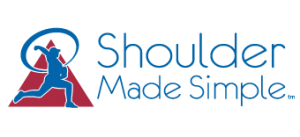Lower Back Pain? Look to the Hips!
By: Dale J. Buchberger, PT, DC, CSCS, DACBSP
It is not uncommon to hear the phrase “My back went out!” The question is, where did it go and when will it be back? If you have had an episode of lower back pain no matter how short in duration you are amongst 80% of the population. That’s right 80% of the population will experience an episode of lower back pain at some time in their life. Lower back pain does not discriminate; it affects males and females equally. However if you are between the ages of 30-50 you have a greater chance of experiencing lower back pain.
Between the ages of 30-50 our life style typically changes and there is a reduction in activity level. With this reduction in activity we see a gain in weight and a corresponding weakness of the trunk, back and hip muscles. This combined with our new and growing sedentary technological society and we are all setup for the beginning of chronic lower back pain. As the trunk, back and hip muscles get weaker they have to work harder to handle the growing weight. This results in greater fatigue occurring much quicker. Once the muscle support has been exhausted the body relies on passive structures to hold the spine together. Once the passive structures such as the ligaments and intervertebral discs become the main support structures two things happen very rapidly. First these structures wear out and degenerate at an accelerated rate and second they become tighter in an attempt to create more support. The longer these processes are given to proliferate the more likely it is that pain is sure to follow. Pain of a chronic nature is also like the “idiot” or warning light in your car. Once the light goes on it is too late. The problem has been there and is in need of repair.
So what are the key areas that are problematic and what can be done to prevent the cycle from proliferating? First of all strengthening your back is a game of endurance. It is not how much you can lift once it is how many times you can perform a perfect task. Fixing these problem areas is more a game of finesse and control not brut force. There are a couple of key problematic areas. Key weaknesses commonly occur in the hip flexors (front of the hip and thigh), hamstring (back of the thigh), gluteal (buttock) and lower back muscles. Tightness commonly occurs in the calf, hamstrings, hip rotators and hip flexors.
These areas have become fairly predictable because of the postural regression that has occurred in our society. We spend an increasing amount of time sitting either at home, work or in the car. This chronic seated posture combined with decreasing activity levels produces the patterns previously mentioned. When the strength and flexibility of the hips and legs is gradually reduced the lower back takes up the slack and eventually gives out. Here are a few simple ways to test your risk of developing lower back pain. From a seated position see if you can cross one leg over the other. Grab your knee with both hands and pull your knee towards your chest. If you can’t do this, your hip rotators have gotten too tight. Next stand on one leg and bend your knee slightly. See if you can stand on that leg for greater than 20 seconds. Do this on the other leg as well. If you can’t then your hips and legs have weakened to the point that your body has found other ways to compensate. Last, if you feel the need to use a handrail to get up and down stairs then you have lost the ability to balance well on one foot. Since walking and general ambulation takes place on one foot at any given time this is an important asset in preventing lower back pain.
Walking is the best exercise for most conditions. In order to get both an aerobic and weight loss benefit to a walking program it needs to be at least 4 days per week for 30-45 minutes. It also needs to be continuous. You can’t stop in the middle to chat with the neighbors. Just wave and keep walking. There are several good resources for stretching and strengthening exercises for the lower back and hips. The book I am recommending lately is Muscle Medicine by Rob DeStefano, DC and Bryan Kelly, MD. This book does a nice job explaining various muscle related injuries and has a nice selection of simple exercises for both strength and flexibility. If you are interested a simple resource for home based injury prevention and self-treatment then this book would be a good choice.




